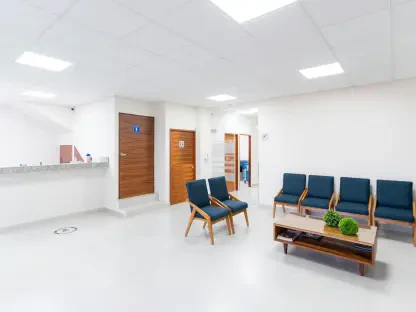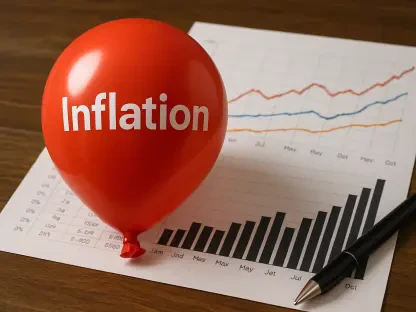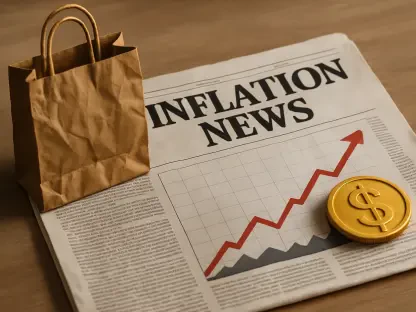A Shocking Success in a Tough Healthcare Arena
Picture a healthcare industry battling skyrocketing costs, unpredictable reimbursements, and relentless demand for services, where even the biggest players struggle to keep pace with expectations. Amid this challenging landscape, Universal Health Services (UHS), a hospital operator headquartered in King of Prussia, Pennsylvania, delivered a stunning third-quarter performance in 2025, posting an adjusted profit of $5.69 per share against Wall Street’s modest prediction of $4.84. This unexpected triumph raises a critical question: how did UHS defy the odds in such a demanding sector?
The significance of this achievement extends beyond a single company’s balance sheet. It serves as a beacon for an industry at a pivotal moment, grappling with policy shifts and financial pressures while striving to meet patient needs. UHS’s results offer a glimpse into the strategies and circumstances that can transform challenges into remarkable wins, setting a precedent for others in the field.
Why This Milestone Resonates in Healthcare Today
The healthcare sector stands as a complex web of rising patient demand and persistent economic hurdles, from escalating operational costs to fluctuating insurance payouts. UHS’s ability to surpass profit forecasts isn’t merely a corporate feather in the cap—it mirrors the broader dynamics affecting millions of patients, policymakers, and investors across the nation. This performance highlights how hospital operators must navigate a high-stakes environment where every decision impacts both care delivery and financial health.
Policies like the Affordable Care Act, often referred to as Obamacare, alongside Medicaid expansions, have fueled patient volumes at facilities nationwide. For UHS, this translates into a tangible uptick in admissions, reflecting a trend that shapes access to medical care while testing providers’ ability to balance quality with profitability. The company’s success underscores the critical interplay between legislative frameworks and operational outcomes in today’s medical landscape.
Unpacking the Forces Behind the Profit Jump
Several key elements converged to drive UHS past Wall Street’s expectations in the third quarter of 2025. A notable 2% increase in same-facility adjusted admissions at acute care hospitals, coupled with a 0.5% rise in behavioral healthcare facilities, signaled strong demand mirroring industry patterns tied to Obamacare and Medicaid plans for low-income populations. This growth in patient numbers provided a solid foundation for revenue gains.
Adding to this momentum was an unanticipated financial windfall: a $90 million pre-tax reimbursement from a newly approved Medicaid state-directed payment program in Washington, D.C., covering services over the past year. This one-time boost, not factored into earlier projections, significantly elevated earnings. However, not all was smooth sailing—a $35 million charge to strengthen self-insured liability reserves due to adverse claims trends slightly dampened the overall financial uplift, illustrating the delicate balance of gains and risks.
Comparatively, UHS’s trajectory aligns with that of HCA Healthcare, a major competitor that also outperformed profit estimates in the same period, driven by robust Medicare volumes despite weaker Medicaid figures in certain regions. These parallels reveal a shared ability to capitalize on demand surges while managing sector-specific challenges, positioning UHS as a standout yet grounded player in the field.
Industry Reactions and Market Confidence
Financial analysts have been quick to spotlight UHS’s third-quarter results, with LSEG data revealing how the actual profit of $5.69 per share far outstripped the consensus estimate of $4.84. This gap emphasizes the unpredictable nature of one-off financial boosts like the Medicaid reimbursement, which caught even seasoned forecasters off guard. Industry commentary also draws parallels with HCA Healthcare’s performance, noting a common strength in Medicare patient volumes as a stabilizing factor amid Medicaid fluctuations.
Market response further amplified the impact of UHS’s announcement, with the company’s share price surging 6% in extended trading after revealing a $1.5 billion expansion to its stock buyback plan. This move, paired with a revised revenue forecast for the coming years ranging from $17.31 billion to $17.45 billion—above the analyst average of $17.21 billion—signals strong investor trust in the company’s strategic direction and sustained growth potential. Such actions reflect a calculated effort to bolster confidence in a volatile sector.
Strategic Takeaways for Healthcare’s Evolving Path
UHS’s recent performance provides valuable lessons for hospital operators and stakeholders navigating the unpredictable healthcare terrain. One clear strategy is to align operations with policy-driven demand, leveraging programs like Obamacare and Medicaid to capture rising patient volumes, as evidenced by the company’s admission growth. Keeping a close eye on legislative changes for potential reimbursement opportunities can also yield unexpected financial benefits.
Another critical insight lies in managing financial exposure with proactive measures, such as setting aside reserves for liabilities. UHS’s $35 million charge to address unfavorable claims trends demonstrates the importance of preparing for unforeseen costs to safeguard profitability. This approach ensures stability even when challenges arise, offering a buffer against industry uncertainties.
Finally, building market trust through bold strategic decisions proves essential. UHS’s upward revenue projection and significant stock buyback plan serve as powerful tools to reassure investors of long-term viability. These steps, grounded in the company’s latest achievements, outline a blueprint for turning sector-wide obstacles into stepping stones for success, emphasizing adaptability and foresight.
Reflecting on a Remarkable Quarter
Looking back, Universal Health Services’ third-quarter triumph in 2025 stood as a testament to resilience and strategic acumen in a sector fraught with complexity. The blend of increased patient admissions, a substantial Medicaid reimbursement, and careful financial management painted a picture of a company adept at seizing opportunities while mitigating risks. This performance not only elevated UHS’s standing but also illuminated broader trends shaping healthcare delivery and economics.
Moving forward, the industry could draw inspiration from these results by prioritizing adaptability to policy shifts and patient needs. Exploring innovative ways to secure financial stability, such as tapping into reimbursement programs or enhancing operational efficiency, emerged as a vital next step. Additionally, fostering investor confidence through transparent and ambitious planning remained a cornerstone for sustained growth, ensuring that the lessons from this quarter continued to guide healthcare providers toward a more robust future.









